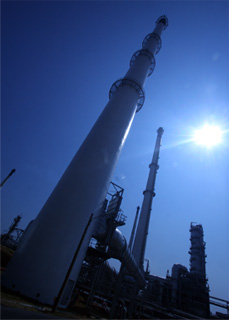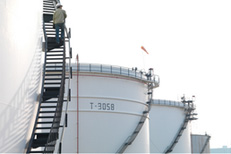Factors that have effect on the oil prices can be categorized into 3 factors as follows: |
|
|
1. Fundamentals which are demand and supply
1.1 Demand is the demand for crude (refineries) and demand for oil products (consumers). Normally the demand that is forecasted is the demand for oil products. The supply will align with the oil prices. Therefore, the price will be higher if the demand rises. When considering if the demand will rise or not, we consider from economic growth. The oil usage tends to rise when the economy is expanding. When the economy shrank, oil demand tends to drop accordingly.
1.2 Supply is quantity of oil including crude quantity (from oil fields) and quantity of oil products (refinery products). When declaring the oil supply, it refers to crude supply. The supply tends to contradict to the oil prices; the prices rise when the supply is decreased. To forecast the oil supply, it should be considered from oil production of the two major producers which are OPEC and Non-OPEC. Normally, the OPEC producer supply 35% of the global production capacity. The OPEC creates the balance between demand and supply in the market. For example, if there is a growth of crude supply of Non-OPEC producers, the OPEC producers will decrease their production capacity in order to prevent over-supply in the market, causing oil prices to drop.
|
 |
|
Since the OPEC has important role in balancing quantity of crude in the market, therefore, the OPEC meetings, which are held in Vienna, Austria, are given much attention. In the meeting, the OPEC members make decision on crude production quota. The OPEC uses this opportunity to adjust the crude pricing to be at reasonable rate. For example, when the crude prices sharply dropped in the second half of 2008, in order to lower its over supply from the market OPEC decided to reduce its capacity for several times, resulting the decrease of 4.2 million barrels per day in total from its highest capacity in September 2008. The decreasing production quota significantly maintained the crude price at that moment.
1.3 Oil Inventories include crude oil inventories and petroleum product inventories. The US inventories are declared by the U.S. Energy Information Administration (EIA) every Wednesday directly influences the WTI crude prices. In addition, the European, Japanese and Singaporean inventories, which are large ones, also have effect on the crude prices and petroleum product prices in each region.
|
 |
2. Financial/Investment flows: Financial/Investment flows are related to the global oil markets since nowadays oil trading are more like investment. Investors decide to invest in the markets that provide the highest return and sell or withdraw money from the market that gives lower return.
2.1 financial markets: Normally crude prices moves in the opposite direction to the US dollars. In other words, the crude prices rise when the US dollar is weakened. Factors influencing the weakening of US dollar can be analyzed as follows:
(1) Capital flow: Investors choose to invest in the markets they will gain highest return. Therefore, when the economy is in good condition, investors prefer to invest in high-risk assets for higher returns by selling US dollar since it is low risk asset and moving the investment to higher risk assets such as equity and oil. Consequently, the stock prices and oil prices are raised while the US dollars is weakened.
(2) Inflation risk management: Since the key factor leads to inflation growth is energy cost, mostly oil pricing, investors choose to invest in oil markets because they will gain more or as much as inflation. Thus, investment in oil then works as hedge against loss while investing in other assets when there is inflation growth might gives loss to net income.
(3) Producers’ point of view: Since the US dollars is the main currency for oil trading, when the dollar is weakened, oil producers will gain less from the same quantity of the trading. Therefore, they are willing to sell crude oil at higher prices to gain back the return, resulting the oil prices to be raised.
(4) Consumer’s point of view: Since the US dollars is the main currency in oil trading, if the dollar is weakened, consumers pay less for oil at the same amount. Therefore, the oil consumption will rise and the price is increased as a consequent. |
|
2.2 Investment market: Usually crude prices go in the same direction with equity market (the major US equity market is Dow Jones Indexes). Since stock and oil are considered to be high-risk assets that give high return when economy is in excellence condition, when investors are confident in the economic growth they invest in high-risk assets more. Stock and oil trading gives higher return than other investment such as buying US dollar or government bond. In addition, energy shares are the majority in the equity market. When the crude price is increased, the energy stocks also rises along with the stock indexes.

|
3. Sentiment of the market: Nowadays, financial and investment flows are related to oil markets since oil is traded for investment more. Investors decide to invest at the markets that give the highest return by selling or withdrawing from the market that gives lower return.
The market sentiment or what we called psychological factors is another main factors affecting oil prices, especially in the past 1-2 years. Investors’ sentiment toward news or incidents as well as forecast of economic outlook, oil demand in the future, oil production for the market and conflicts between crude oil producer countries that might affect on oil production. These issues crucially have psychological effect on investors, causing them to invest more in order to speculate prices. Investors might be afraid that the issue will cause the oil prices to go up, consequently, they purchase oil in advance in order to sell when the prices rise later. As a result, the price is increased due to higher purchase power. On the other hand, if they issues are considered to cause supply more than demand, investors might sell oil because they believe that the prices will drop in the future so they immediately sell, resulting the prices to decrease. For example, in the world’s economic crisis in 2008, the oil prices significantly drop because investors worried that the global economic shrinkage would caused lower demand for oil. Therefore, they sold oil. However, in Q2 of 2009, the oil prices began to increase after the US economic number signal positivity. Investors then forecasted that the oil demand would grow since the US economy was improved (even though oil consumption of US was not in good condition at that time). Another example is when Iran threatened to fire missile or the US added more measures for boycotting Iran. This also suggested that Iran’s crude production would be affected from more severe conflict (even though Iran’s production capacity was at normal level at the moment). |
|





